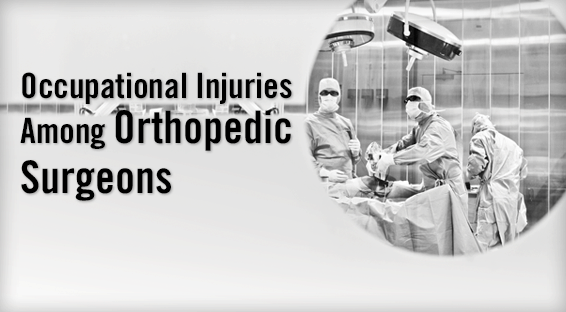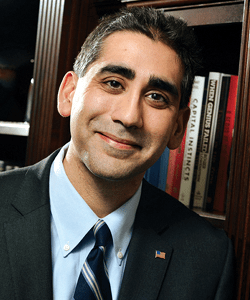Orthopedic surgery requires surgeons to spend many hours per week in body positions that are known to contribute to musculoskeletal injuries. Although efforts have been made to improve ergonomics and reduce strains that occur during surgery, these techniques are often not widely adopted. Adherence to ergonomic guidelines can be difficult, and many surgeons are unaware of current guidelines. “The combination of these factors suggests that surgeons are at high risk for occupational injuries, such as carpal tunnel syndrome, back sprains, and torn ligaments,” says Manish K. Sethi, MD. “The demand for orthopedic services is growing, but we’re in the midst of a shortage of orthopedic surgeons. Injuries to orthopedists could have substantial consequences for the healthcare system.”
Examining the Issue
In the Journal of Bone & Joint Surgery, Dr. Sethi and colleagues assessed occupational injuries among orthopedic surgeons using an electronic survey that was sent to orthopedists in Tennessee. “There have been very few studies that have explored occupational injuries in physicians, and no studies to our knowledge have specifically involved orthopedics,” says Dr. Sethi. “Our analysis is among the first contributions to the literature on injuries among orthopedists, an area that clearly needs greater awareness.”
The survey was designed to capture information about respondents’ subspecialty, practice setting, and length of time in practice as well as basic information about any injuries that were sustained. Information was also collected on how injuries affected surgeons with regard to days of work lost and if any institutional resources were made available during recovery.
The study team found that 44% of respondents had sustained one or more injuries at the workplace at some point in their careers. Among all respondents, about one in 10 missed work due to workplace injuries. The anatomic areas associated with the greatest percentage of injuries were the hand (25%), lower back (19%), and neck (10%). The likelihood of injury increased with the length of time in practice. The prevalence of injury was highest among surgeons who had performed surgery for 21 to 30 years.
Impact of Injuries
More than one-third of respondents who were injured reported not having access to any institutional resources to support their recovery, and only about 25% stated that they reported their injury to their institution (Table 1). “Based on this information, it seems that many orthopedists have occupational injuries, but they’re not reporting them because they believe that there isn’t an existing reporting mechanism in place,” says Dr. Sethi. “This is alarming, considering that many systems are in place for workers in other industries who are injured on the job.”
Data from the study also showed that some injuries sustained by orthopedists were significant because they had an impact on operating room performance (Table 2). “In some cases, injuries caused surgeons to lose 3 or 4 weeks of work,” Dr. Sethi says. “These findings suggest that concerted efforts are needed to address the resources that are available to orthopedic surgeons. This volume of missed work may have economic implications for surgeons and their healthcare systems.”
Changes Necessary
Dr. Sethi says that greater awareness of the issues surrounding injuries among orthopedists is necessary. “Steps must be taken to ensure that orthopedists
avoid occupational injuries,” he says. “For example, hospitals and training programs should educate orthopedists about hand and back injuries—the most common injuries reported in our analysis—and provide strategies for preventing them. The problem of insufficient institutional resources for these occupational injuries must also be addressed.” Dr. Sethi recommends that large academic medical centers establish policies and procedures to cover workplace injuries but notes that it may be challenging to create them in smaller, private hospitals. As a result, this may become a bigger issue as the shift to hiring physicians through hospitals and treating them as individual contractors continues.
“Surgeons should be encouraged to report any injuries, especially needlesticks or sharp sticks, and obtain appropriate testing,” says Dr. Sethi. “The number of patients needing orthopedic care is increasing faster than the number of orthopedists that are available to treat them. That ratio is expected to become more burdensome over time as the population ages. Efforts to keep the orthopedic workforce healthy are worthwhile, but we still need to collect more data on the specifics of injuries sustained on a national level. In the meantime, it’s hoped that orthopedic surgeons will stop and think about their own health. If we’re not in good health, we cannot care for patients adequately.”




 TimH
TimH